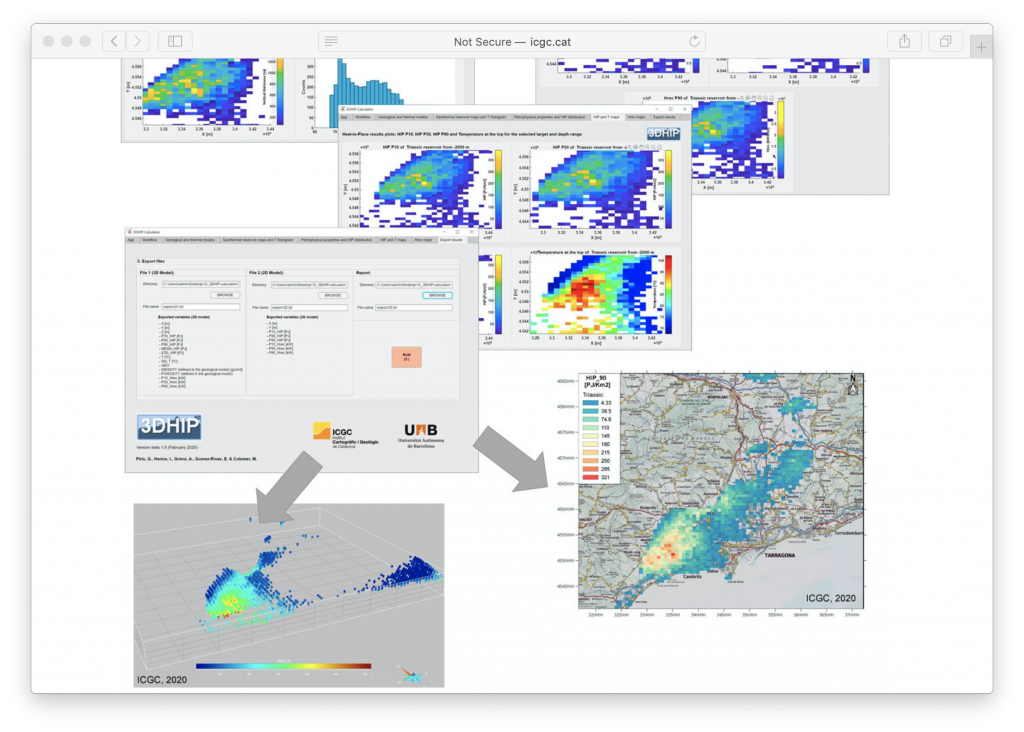New open tool to help promote exploration of Spain’s geothermal potential

The Cartographic and Geological Institute of Catalonia has released a tool open to the public that generates maps allowing to quantify the deep aquifers that exist in Spain in terms of available energy.
A new tool by the Cartographic and Geological Institute of Catalonia (ICGC) will allow the implementation of new geothermal projects according to the Ignasi Herms, Head of Geological Resources of ICGC to local publication Efe.
There is too little knowledge and publicity of the potential of geothermal energy in Spain, so the expert.
The tool is accessbile here.
The ICGC device is based on the 3DHIP-Calculator ‘software’ produced together with the Autonomous University of Barcelona (UAB) and generates maps that allow quantifying, in terms of available energy, the deep aquifers that exist in Spain.
This makes it a true “catalyst to materialize new projects” for geothermal energy, by facilitating the evaluation of the areas to install them.
An underdeveloped energy in Spain
Despite its advantages, geothermal energy is underdeveloped in Spain because “the last studies that were carried out deep underground were from the early 1980s” and from then on “it was no longer explored, because it was considered that hydrocarbons at that time they were more affordable ”.
For this reason, “we are losing a resource that we have under our feet” and that could be exploited as it happens in other parts of Europe “such as France or Germany, where in its day a lot was bet on this type of technology” until the point that “some countries have expressed their desire that it become the substitute for natural gas”.
It is precisely there where the importance of 3DHIP-Calculator lies since, thanks to its ability to integrate mathematical models with geological and thermal models in 3D for the first time, it allows building three-dimensional geological models to forecast, before beginning any drilling, the amount of potentially recoverable thermal energy in a given depth interval.
Thus, it is possible to “make calculations automatically, considering the uncertainty of certain variables, and derive the information to generate” reliable maps that promote geothermal “from all points of view: administration, manufacturers and research,” adds this technician.
And is that geothermal “is not a new technology, or that it has to be developed in the future, such as hydrogen,” insists Herms, as there are numerous European projects already underway, but rather “what we lack in our case is to get the information out of the drawers and make it available to society and the administration, and generating these maps is the first step. ”
For this reason, this tool is available to those interested free of charge, since its purpose is to “show society the potential we have underground” and thus encourage them to take advantage of it.
Key to the energy transition
Herms predicts that this type of energy “will play an important role within the mix of renewables in the framework of the energy transition, especially in urban areas where it is essential to reduce CO2 emissions and help decarbonise the housing stock” , with which he trusts that Spain advances positions since now “we are at the tail” of this energy use.
The entire initiative is part of the ICGC GeoEnergy project and the European projects GeoERA HotLime and GeoERA MUSE, which seek to improve knowledge about the availability and potential of taking advantage of the geothermal resources available in the Old Continent, and has also had the collaboration of geological services from countries such as Germany and the Netherlands. Green EFE
Source: EFE Verde